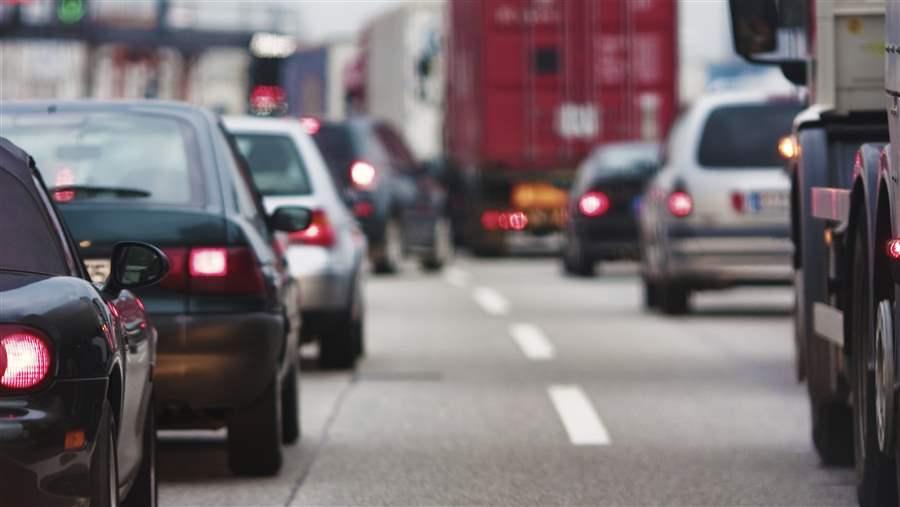Rocky Road Funding
 © iStockphoto
© iStockphotoThe Highway Trust Fund, the source of most federal funding for transportation infrastructure, has faced deficits over the past decade.
You know the nation's transportation funding crisis has caught the public's attention when an ice cream shop in Michigan dedicates 1 percent of the revenue from selling its new "Michigan Pot Hole" flavor to the state for road repairs. While every little bit counts, it'll take more than spare change from ice cream sales to solve the major challenges in our surface transportation infrastructure.
Part of the complexity is that every level of government funds our nation's highways and transit. As U.S. Transportation Secretary Anthony Foxx said at a recent event at the Pew Charitable Trusts, "There is no one place you can go to get [funding] challenges addressed — it's a team effort." Indeed, between 2008 and 2012, our average annual national spending on transportation was $213 billion, of which 40 percent came from states; 35 percent from localities; and 25 percent from the federal government, in a deeply intertwined system. The federal government funds transportation almost exclusively through grants to states and localities. States use this money, as well as more of their own, to pay for surface transportation and provide funding for localities — which in turn invest directly, using a mixture of funding from every level of government.
There are several reasons that we're at a critical point in addressing the nation's transportation infrastructure. First and foremost, between 2002 and 2012, overall spending on surface transportation fell by $29 billion, or 12 percent in real terms — with states seeing the biggest drop, spending $15 billion, or 15 percent, less in real terms. The shortfalls are due, in large part, to declining gas tax revenue: Changing driving habits and improved vehicle efficiency have reduced demand for fuel, and gas tax rates have not kept up with inflation.
For many of the same reasons, the Highway Trust Fund, the source of most federal funding for transportation infrastructure, has faced deficits over the past decade. And while Congress has managed to close these gaps with temporary, short-term fixes, the Congressional Budget Office projects that, absent reforms, the cumulative shortfall in the Highway Trust Fund will grow to $173 billion over the next 10 years.
Because the funding streams of the federal and state governments are interconnected, a shortfall in the federal trust fund could have a major impact on the ability of states and localities to invest in transportation. The trust fund money flows to states and localities primarily as reimbursements for money already spent, meaning that if the available funding decreases, states and localities could see payments delayed or reduced. In addition, the mere uncertainty of a federal funding shortfall has, in the recent past, resulted in a subset of transportation bonds that are solely reliant on anticipated federal revenue for repayment being downgraded. Ultimately, uncertainty in the level of federal funding makes it harder for states to plan their own transportation investments.
With the upcoming expiration of the latest trust fund "patch," Congress is considering how best to bolster the depleted fund and devise a long-term fix. At the same time, states and localities are already taking action to address their own shortfalls in transportation infrastructure funding. In February, Iowa passed a gas tax increase of 10 cents a gallon, which is projected to generate $200 million in additional transportation money next year. Washington state is considering increasing its per-gallon gas tax by 11.7 cents over three years along with other measures to raise additional revenue for transportation.
But states cannot fix the problem by acting alone. Because all levels of government play an important role in funding our nation's transportation system — particularly in a strained fiscal environment — states need greater predictability from their federal partners in order to plan future transportation projects more efficiently and effectively. In turn, states' use of different options to improve the sustainability of their own highway and transit funding can inform federal decision-making now and in the future. The nation's investment in its transportation system should not hinge on skimming the profits from a great new flavor of ice cream.
This piece was previously published in The Hill.
Schroeder directs fiscal federalism initiatives at The Pew Charitable Trusts in Washington.






